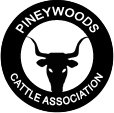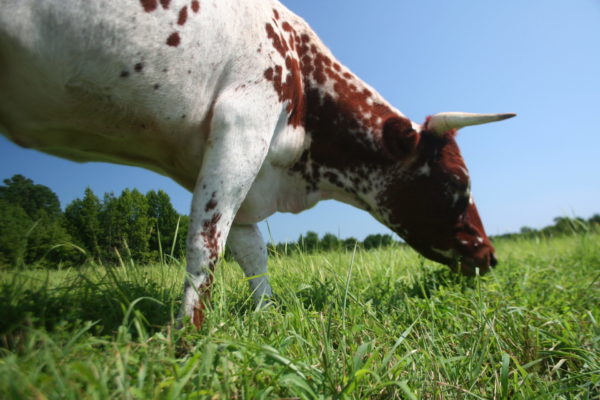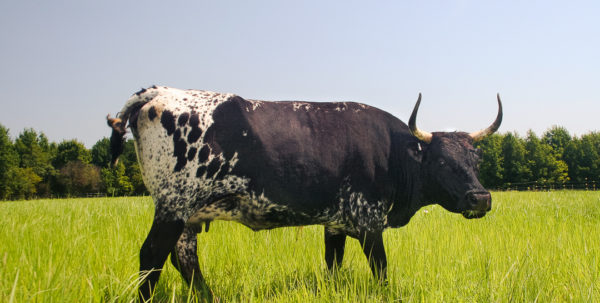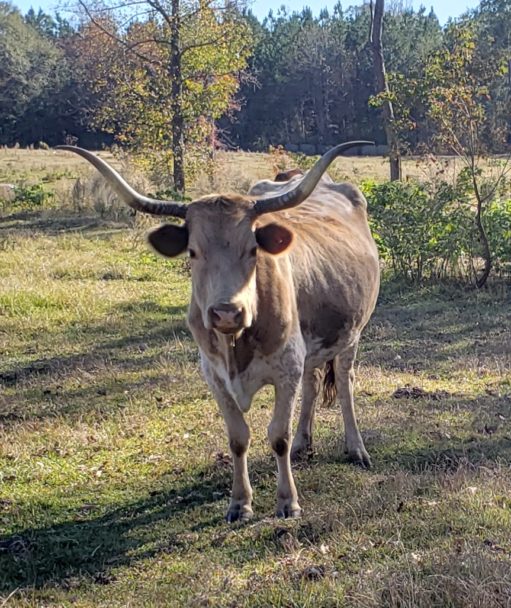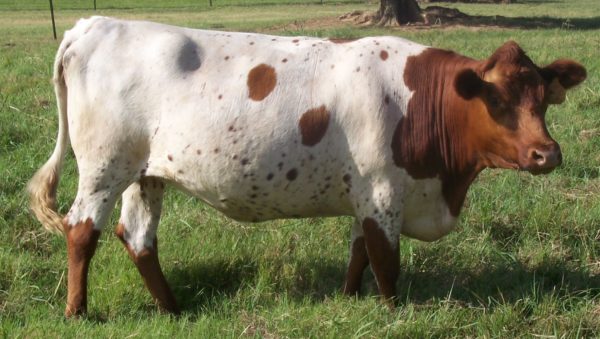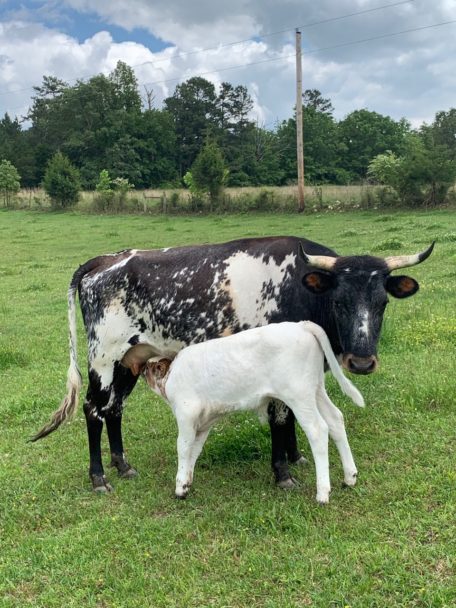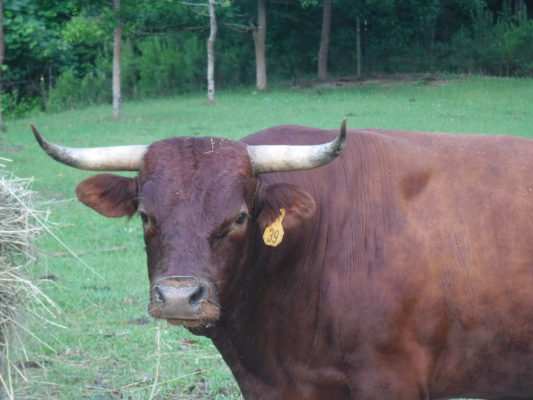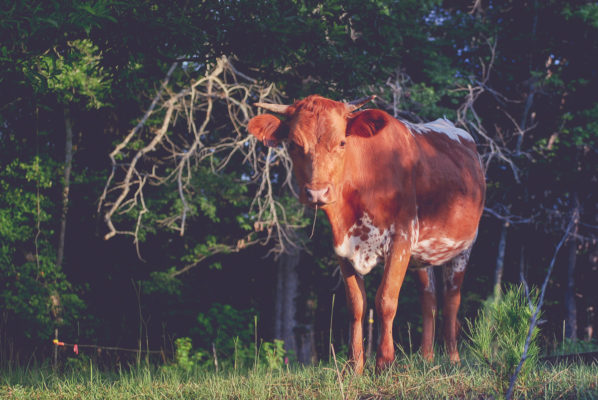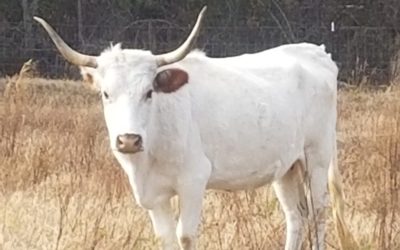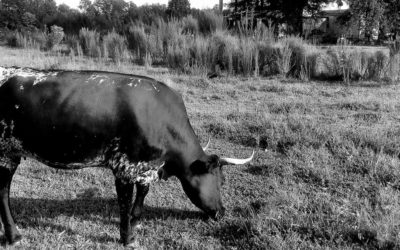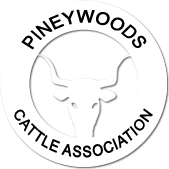
Breed Registry
Pineywoods Cattle
Association
Dedicated to the long term survival of the breed and its heritage
The Pineywoods Cattle Association
The purpose of the association is to ensure the long term survival of the breed and its history. Maintaining an accurate recording of the pedigree of the cattle allows us to closely monitor strains/bloodlines with extremely low numbers and develop breeding plans to maintain viability within those strains.
The collection of data helps breeders fine tune their breeding programs, choosing genetics that fit best with their system and goals.
We strive to connect breeders with the resources they need to solve problems and build the most efficient herd management strategies for their farms.
landrace noun
land·race | \ ˈlan(d)-ˌrās \
Definition of landrace
: a local variety of a species of plant or animal that has distinctive characteristics arising from development and adaptation over time to conditions of a localized geographic region and that typically displays greater genetic diversity than types subjected to formal breeding practices
Dr. Sponenberg’s article on the subject
Heritage Cattle
America’s
Landrace Cattle
A rare heritage breed, Pineywoods Cattle are considered threatened by the livestock conservancy. In the early 1500’s the Spanish brought their native Iberian cattle to the new world. These cattle were extremely self sufficient. They were raised on the land with very little influence from the cattlemen themselves, being driven from one area to another only by necessity. Pineywoods cattle were predominantly raised in the Georgia, Mississippi and Alabama region, along with a few other places. On large range land rarely handled by the cattlemen, the breed was extremely self sufficient, practically wild. Over time they became well adapted to the thick, wet and humid landscape of the area. They were originally used for beef and some dairy. With the boom of the timber industry Pineywoods oxen became a staple part of everyday work life.
Historic Pineywoods vs Today’s Pineywoods
Pineywoods, from the time they came ashore until the time the last free range herds were put into confinement, were able to sustain themselves by moving away from threats be it starvation, predators or lack of a mineral need. As hardy as Pineywoods cattle are once you restrict their ability to freely travel to fulfill their needs you take on the responsibility of seeing that their needs are met.
Pineywoods have the same basic needs as any other fenced in cattle:
Food ~ Water ~ Minerals ~ Parasite control
and someone to put their eyes on them and check their condition
Pineywoods are adept at making the most out of the conditions they are given but you must use common sense. In the past some have tried to raise Pineywoods by fencing them in a woodlot and checking on them from time to time with no thought to worming. They might “survive” under these conditions, but they won’t thrive.
Why Consider Pineywoods Cattle?
Body type
Small framed, well balanced
Within the different strains some are more “rangy” with longer legs and a longer torso, and some are shorter and square. A guinea (dwarf) gene does exist in some stains, although it is rare.
Size
3/4 of a cattle ‘unit’ by grazing standards. Cows range 600-900lbs. Bulls range 800-1200lbs.
Color and pattern
Color and pattern varies widely within the breed from reds, black, yellow, white, and even grey. Some strains are known for specific patterns or colors based on the preferences of those early family’s that bred them. Many solid, speckled and brindle colors appear as well as most of the wild type cattle patterns.
Temperament
Some strains are known for being more docile than others. Within the strains temperament varies by herd and handling. Calves tend to follow the behavior of their mothers. Herds also tend to revert to a more wild state when management is “hands off” and more managable when management is more “hands on”.
Horns
Horn shape and size vary by strain. Generally they follow the look of their Iberian ancestors. They tend to be medium to long, turning out or up, some with distinctly Spanish twists. Polled genetics do exist in some strains.
Articles
Rescuing Rare Pineywoods Cattle Strains by Dr. Sponenburg
D. P. Sponenberg 2005 Some of the Pineywoods cattle strains are rare, and some are close to extinction. In order to keep the genetic material from these available to the breed, it will be important...
Conservation Breeding for Pineywoods Cattle Strains by Dr. Sponenburg
Dr. Sponenberg Conservation breeding is somewhat different than production breeding, but is essential if the various strains of the Pineywoods cattle are to see the next few decades. Conservation...
General Issues for Pineywoods Breeders by Dr. Sponenburg
D. P. Sponenberg A few general issues are facing the Pineywoods breed, and the next decade will determine how much of the breed is brought into the future. Not only is it important to assure the...
Buy Wisely by Dr. Sponenburg
D. P. Sponenberg Pineywoods cattle are an important genetic resource for the deep south, but will only continue to be important if they are carefully bred and maintained. Purity is important. The...
Landrace Breeds by Dr. Sponenburg
Pineywoods Cattle Strains D. P. Sponenberg Pineywoods cattle are a landrace breed, which means that the breed formed under local conditions for local purposes – usually with a great deal of...
Twilight of an Era by Charles M. Simon
Written by: Charles M. Simon, Covington County Extension Agent The 80 x 14 foot mural before you was commissioned to help us to remember an era when the old Spanish based native cattle grazed the...
Classified Ads
Test Ad 1
Be consistant (and short) on the page is titled. Examples:"Hickman Bull for sale""Cattle Gates for sale" If they have only sent one photo, then set it as the Featured Image.Do NOT also add it to the...
Test Ad 2
Be consistant (and short) on the page is titled. Examples:"Hickman Bull for sale""Cattle Gates for sale" If they have only sent one photo, then set it as the Featured Image.Do NOT also add it to the...
